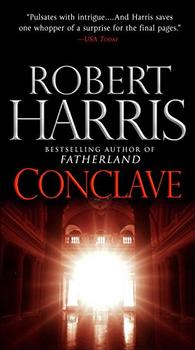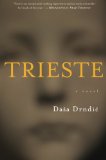Summary | Excerpt | Reviews | Beyond the book | Read-Alikes | Genres & Themes | Author Bio

The Secret History of Pius XI and the Rise of Fascism in Europe
by David I. KertzerThe Pope and Mussolini is a riveting account of the parallel rise to power of the authoritarian scholarly Vatican librarian who became Pope Pius XI and the narcissistic son of a socialist blacksmith. The unholy alliance between Benito Mussolini and Cardinal Achille Ratti (who later became Pope Pius XI) permanently transformed the role of the Catholic Church in Italy and provided legitimacy to Mussolini's Fascist rule.
The two dissimilar men made their ascent in the same year, 1922.
 The intellectual Ratti with three doctorates had taught seminarians in Rome and Padua before rising to become Prefect of the Vatican Library. His predecessor Pope Benedict XV sent him as papal nuncio (diplomatic envoy) to Warsaw and later, named Ratti cardinal, and made him Archbishop of Milan. After Benedict's death, Ratti, the dark horse in the lengthy papal conclave, was elected Pope on February 6, 1922.
The intellectual Ratti with three doctorates had taught seminarians in Rome and Padua before rising to become Prefect of the Vatican Library. His predecessor Pope Benedict XV sent him as papal nuncio (diplomatic envoy) to Warsaw and later, named Ratti cardinal, and made him Archbishop of Milan. After Benedict's death, Ratti, the dark horse in the lengthy papal conclave, was elected Pope on February 6, 1922.
Mussolini was an unlikely political leader whose elevation from relative obscurity was equally rapid. Inspired by the Russian Revolution and the rise of communism, the former schoolteacher and wounded WWI veteran used his position as editor of the Socialist party's newspaper Avanti! as a pulpit to espouse his ideals, and then used the same oratorial and organizational skills to unite the right-wing Nationalist factions after the war, establishing the Italian National Fascist Party. He was just thirty-nine years old and the youngest Prime Minister when elected to this highest office in 1922. Three years later he became absolute dictator after wresting control from the diminutive King Victor Emmanuel III who was more concerned with his coin collections than governing. By abandoning Socialism and embracing Fascism, Mussolini was not the first 20th century politician to shift ideological allegiances but he was certainly one of the more ruthless and ambitious to do so.
 When Mussolini came to power, Italy was a young country (having unified in the early 1870s) with no official religion. The leadership was decidedly anti-clerical, schools secular and divorce legal. In such a climate, the Catholic Church was looking for a way to increase its stronghold through the political system, and the authoritarian Mussolini seemed to fit the bill. It was a classic case of "you scratch my back, I'll scratch yours." Through a series of diplomatic and tactical maneuvers with Pope Pius XI, formalized in the Lateran Pact of 1929, Mussolini secured support for his Blackshirts, the Italian National Fascists, and legitimacy for his ascension as dictator in 1925. In return, Vatican City was made a separate, independent state, with the Pope as titular head and Catholicism recognized as the state-sponsored religion. The Catholic Church and the state were now officially unified effectively quelling opposing political factions.
When Mussolini came to power, Italy was a young country (having unified in the early 1870s) with no official religion. The leadership was decidedly anti-clerical, schools secular and divorce legal. In such a climate, the Catholic Church was looking for a way to increase its stronghold through the political system, and the authoritarian Mussolini seemed to fit the bill. It was a classic case of "you scratch my back, I'll scratch yours." Through a series of diplomatic and tactical maneuvers with Pope Pius XI, formalized in the Lateran Pact of 1929, Mussolini secured support for his Blackshirts, the Italian National Fascists, and legitimacy for his ascension as dictator in 1925. In return, Vatican City was made a separate, independent state, with the Pope as titular head and Catholicism recognized as the state-sponsored religion. The Catholic Church and the state were now officially unified effectively quelling opposing political factions.
Subsequently all public elementary and secondary education included compulsory religious instruction, divorce was abolished and crucifixes were installed in hospitals, governmental offices and public buildings. The bishops, in exchange, took an oath of loyalty to the state. To demonstrate allegiance to the newly official state religion, Benito and his wife, Rachele Mussolini, originally wed in a 1915 civil ceremony, were re-married by a Jesuit priest in a 1925 church service.
Eventually, the ailing Pope Pius XI would come to regret the poisonous relationship and oppose Italy's Race Laws adopted in the late 1930s. But his frail health and the Machiavellian plotting of his closest Vatican Cardinal administrators thwarted efforts to widely disseminate his disapproval. By then of course, the damage was significant. In fact the author, David Kertzer, contends that the relationship between the papacy and the state was mutually beneficial with enduring effects.
The Pope and Mussolini is a fascinating must-read for anyone interested in history who would like to learn more about the backstory of the origins of Fascism and the role of the Catholic Church in the early to mid-20th century. Backed with an extensive bibliography and footnotes, Kertzer has distilled seven years of intensive research into a work of nonfiction that reads like a spy thriller. It's an ideal selection for a book club as it is spiced with intriguing anecdotes about Mussolini's mistresses and the fascist spy network Il Duce (the Duke, as Mussolini was called) unleashed inside Vatican City.
The book contains maps, essential brief biographies of the key participants and takes a controversial stance on the not-so-tacit support provided for Hitler's Germany by Pope Pius XII who succeeded Pius XI. Pope Pius XII was a more worldly man than his predecessor; a career Papal diplomat who had served in Germany for a dozen years and worked within the Vatican machinery to preserve the Catholic Church at all cost.
There is a danger when writing about canonical history to get bogged down in scholarly details rendering the book unpalatable for casual readers. Kertzer has managed to avoid the obvious pitfalls with his refreshing, vital work The Pope and Mussolini that is sure to offend some defenders of the Catholic Church.
Picture of Pope Pius XI by Politisch Wissenschaftlicher Verlag Berlin, 1932, from Wikipedia.org
Picture of Mussolini from Wikipedia.org
For more about Popes in fact and fiction, read our blog post.
![]() This review
first ran in the April 9, 2014
issue of BookBrowse Recommends.
This review
first ran in the April 9, 2014
issue of BookBrowse Recommends.

If you liked The Pope and Mussolini, try these:

by Robert Harris
Published 2017
The best-selling author of Enigma and Fatherland turns to today's Vatican in a ripped-from-the-headlines novel, and gives us his most ambitious, page-turning thriller yet - where the power of God is nearly equaled by the ambition of men.

by Dasa Drndic
Published 2015
"A masterpiece" (A.N. Wilson), this many-layered novel of WWII combines fiction with a Sebaldian collage of facts to explore the fate of Italian Jews under Nazi occupation, through the intimate story of a mother's search for her son
Your guide toexceptional books
BookBrowse seeks out and recommends the best in contemporary fiction and nonfiction—books that not only engage and entertain but also deepen our understanding of ourselves and the world around us.